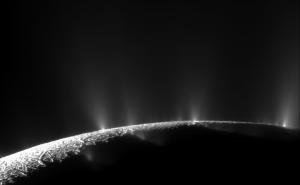T-99: The 100th Flyby

T-99: The 100th Flyby
Although it’s named T-99, this was actually the 100th targeted Titan flyby of the Cassini mission. (An extra flyby was inserted early in the mission but after the Titan flybys had been named.)
During this flyby the Radio Science Subsystem instrument (RSS) team carried out a Titan Gravity science observation, one of only three in the entire Solstice Mission. The main science objectives of gravity measurements at Titan are: 1) assess the presence of a global subsurface ocean by measuring the short-period changes of the gravity field caused by Saturn’s tidal field; 2) determine the exact shape of the satellite and the presence of large scale gravity anomalies; and 3) determine the rheology of how the icy crust changes shape (or flows) via altimetric data.
The largest instrument on the mission, RSS is split in two parts: one resides on the spacecraft, the other at stations equipped to receive very stable radio signals at each of the three Deep Space Network complexes.
The RSS instrument’s split personality allows it to measure the forces acting on the spacecraft by detecting slight changes in the frequency of radio signals sent from the spacecraft to Earth.
Titan Flyby at a Glance
Date
March 6, 2014
Altitude
932 miles (1,500 km)
Speed
13,000 mph (5.8 km/sec)
































